Main Club Excursion 10 Oct 2021
A mixture of members and visitors gathered at the Lions Lookout car park on the sunny morning of October 10, 2021, to learn about the pollination of native plants from Prof Byron Lamont and Dr Phil Groom. As is usual on such excursions with Byron, all the plants of interest sported labels – so identification was a breeze for participants! The Verticordia, Hakea, Orchids, Calytrix, and Trigger Plants were flowering profusely, so it was a delightful classroom.
Some of what we learnt included:
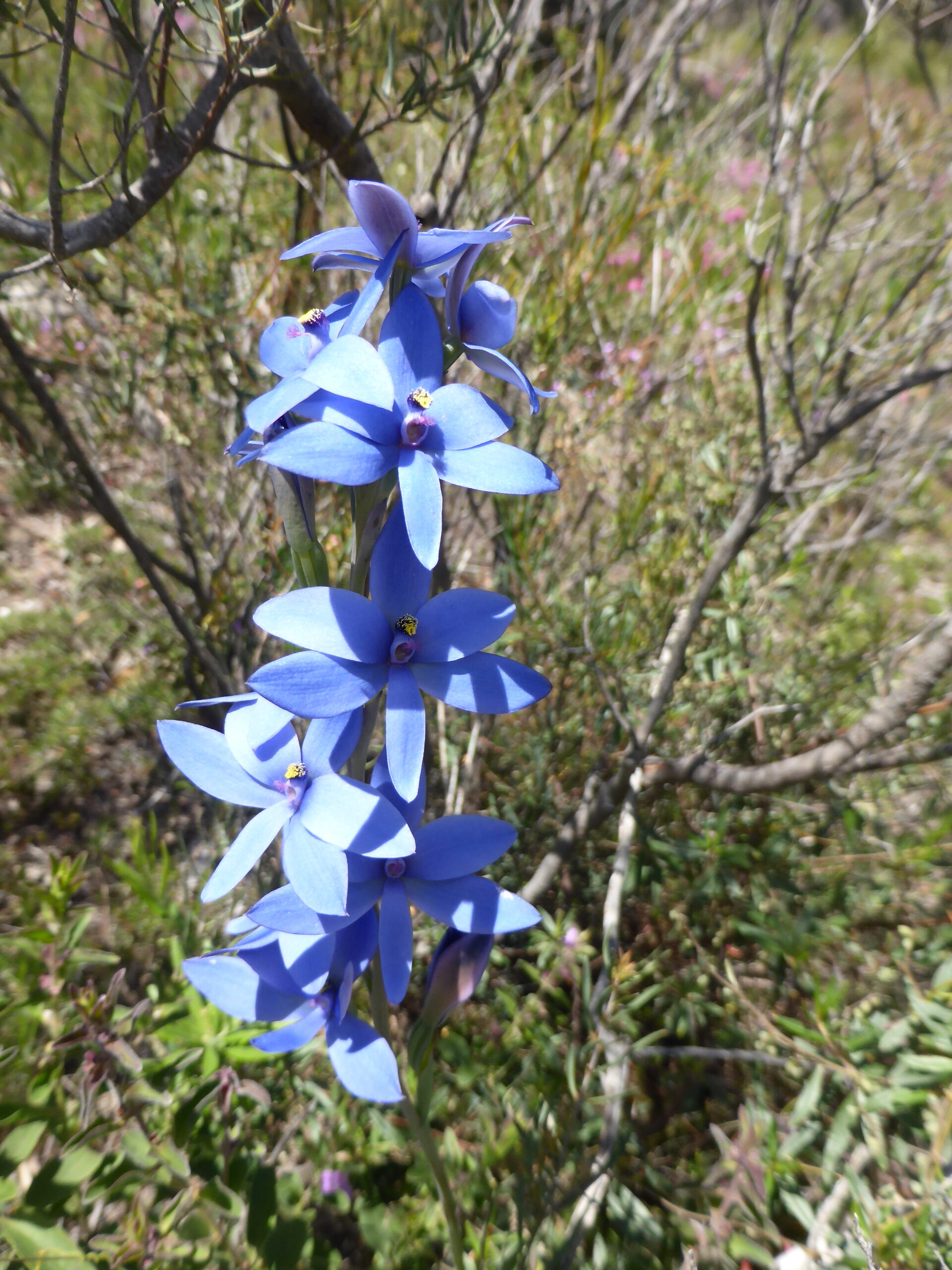
- Some flowers turn red to indicate that they have already been pollinated.
- Hakea trifurcata has some of its leaves shaped like its fruit, which seems to confuse the cockatoos trying to find seeds to eat.
- Dryandra nivea flowers close to the ground and has a musky smell to attract mammal pollinators.
- Birds are attracted to red flowers and insects to blue and yellow flowers.
- Many red flowers (e.g. Grevillea bipinnatifida) contain cyanide to deter birds from eating them, but the nectar doesn’t contain cyanide.
- Grevilleas, with their terminal inflorescences for easy access, are mostly bird-pollinated, but Hakeas, with their axial inflorescences (thus more hidden in the prickly shrub), are mostly insect-pollinated.
- Fringed Lilies (Thysanotus sp.) are buzz-pollinated by native bees.
- Hibbertias are pollinated by beetles. They become dormant in summer.
- The Darling fault line has an enormous depth (15 to 20km drop), but the surface manifestation of it (the Darling Scarp) is very small, being only around 300-400m above sea level; its highest point is Mt Cooke (582m).
- The gneissic granite of the area is quite poor in nutrients, so the local soil is poor also.
Blue Lady Orchid Thelymitra crinita 13 flowers, 15 cm long – Image by Tanya Marwood
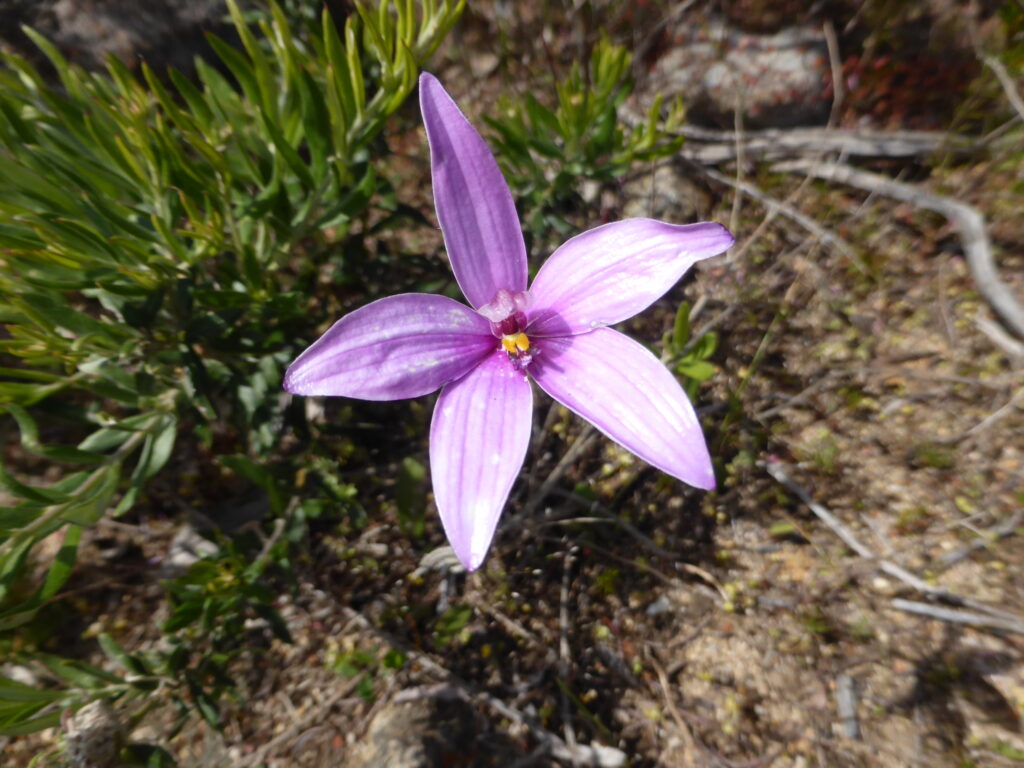
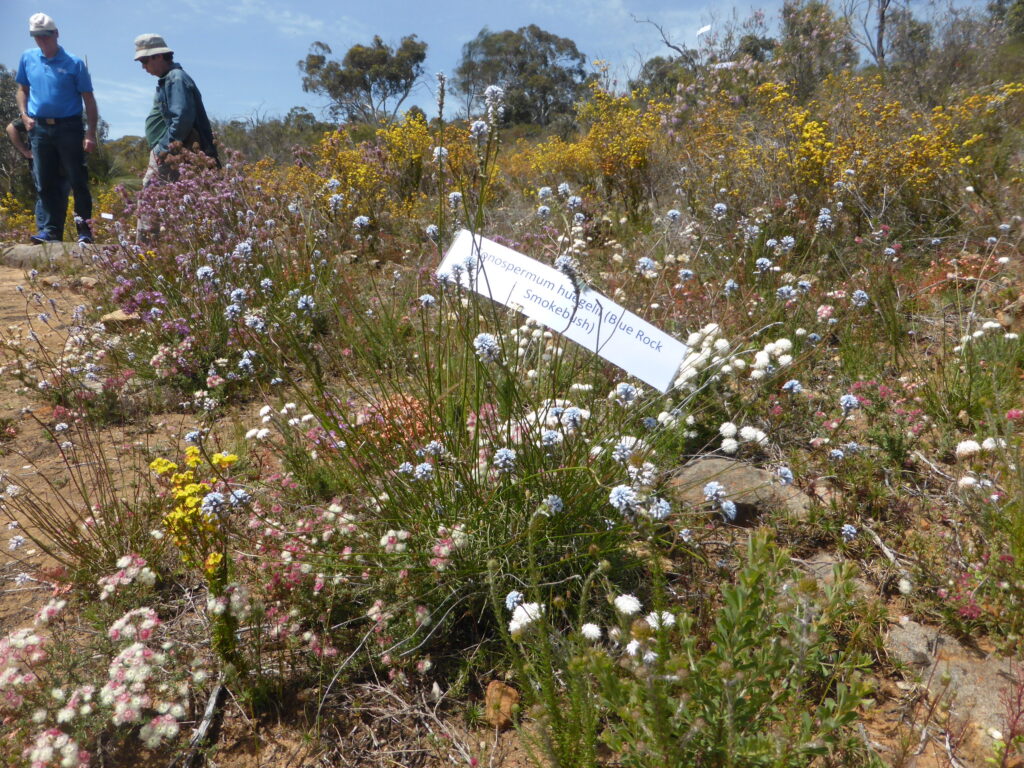
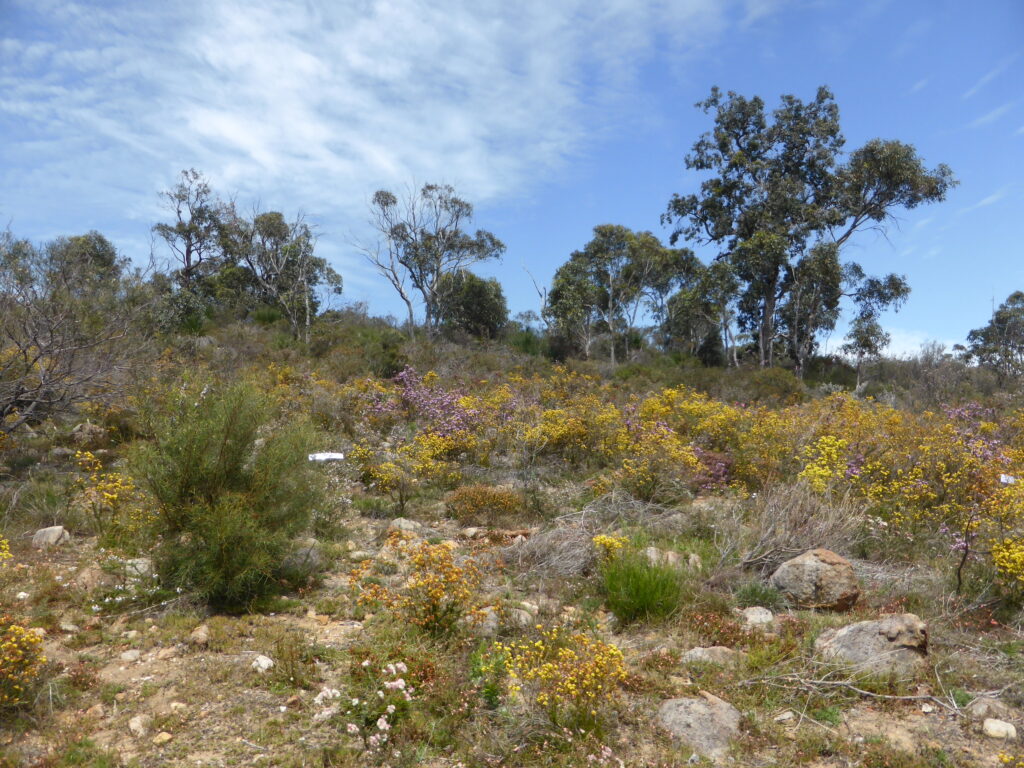
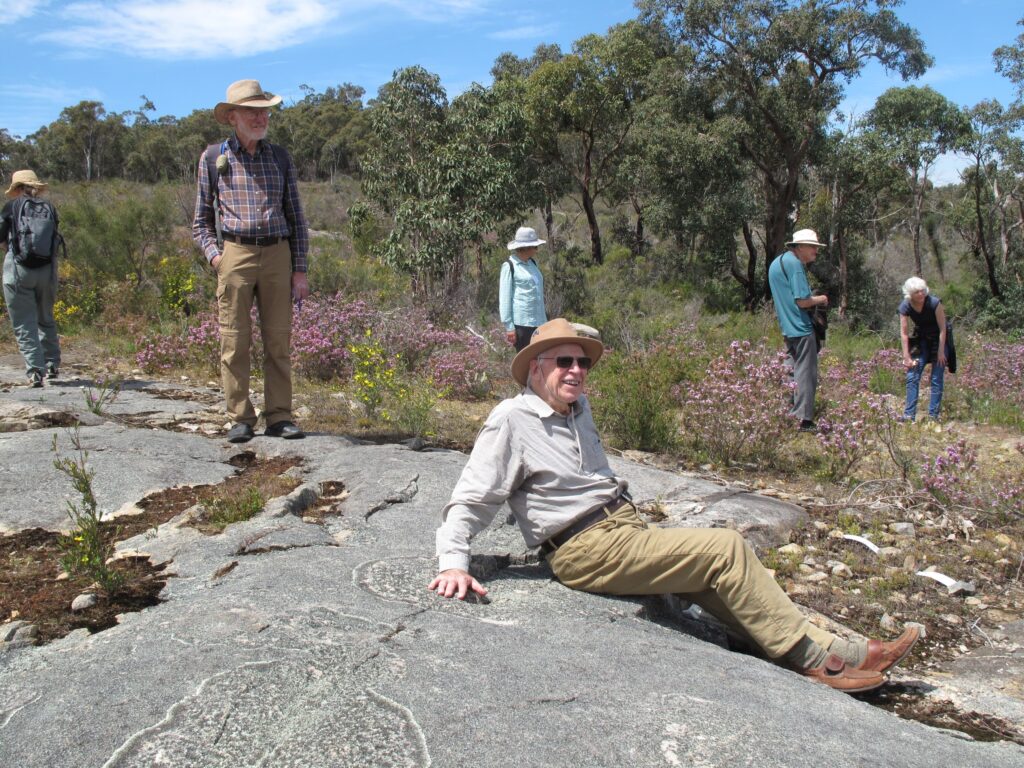
After the excursion, we gathered to rest awhile on a wide granite outcrop overlooking the Swan Coastal Plain and thanked Byron and Phil for their efforts.
Tanya Marwood & Mike Gregson

